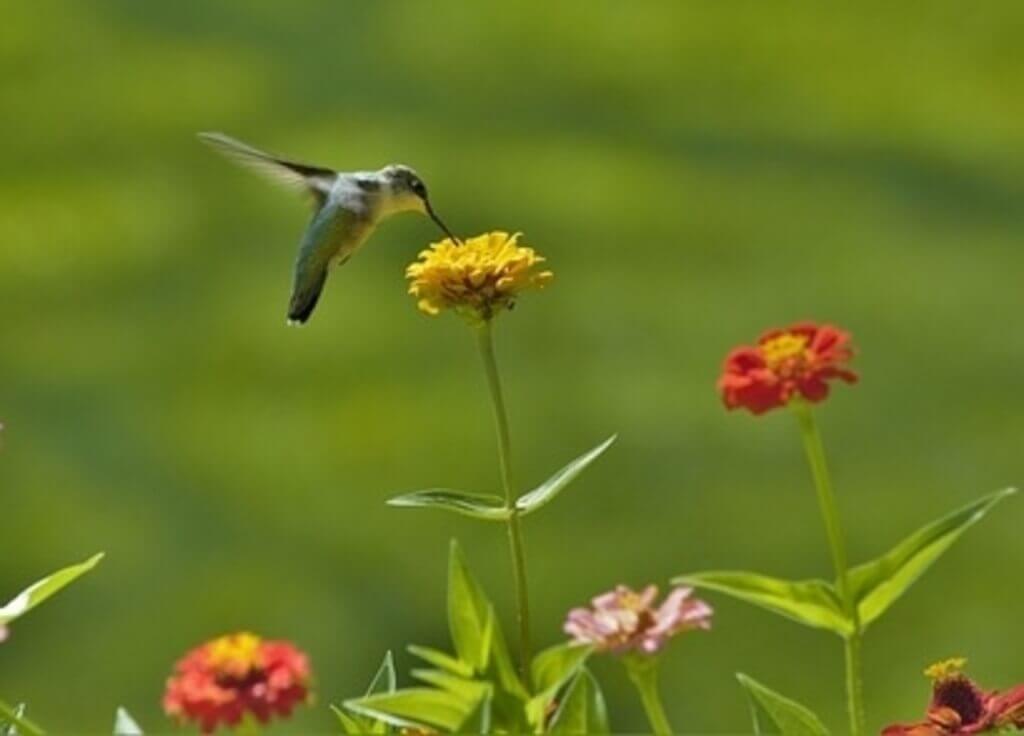Zinnias, cherished for their beauty, grace many gardens, captivating the hearts of not only gardeners but also enchanting bees, birds, and butterflies. In the following article, we’ll delve into the world of these 10 birds that eat zinnias, complete with photo identification and insightful details about each species.
Table of Contents
Types of Birds That Eat Zinnias
American Goldfinch

The American Goldfinch (Spinus tristis) is a small North American bird that ranges across most of the United States and parts of southern Canada. The American Goldfinch is usually around 5–6 inches in length and has a wingspan of about 9–10 inches. It is a member of the finch family, which also includes birds such as the European Goldfinch, House Sparrow, and Pine Siskin.
The American Goldfinch is generally a yellowish color with black markings on its head and wings.The American Goldfinch inhabits open areas such as fields, meadows, parks, and gardens. It feeds primarily on seeds but will also eat insects, nectar, and fruit. One common food source for the American Goldfinch is the zinnia flower.
House Finch
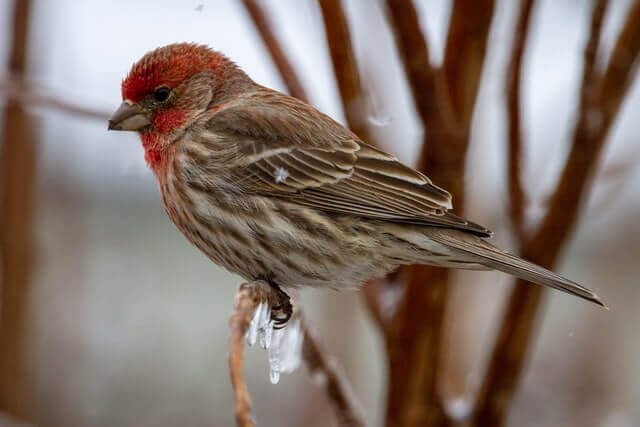
The House Finch is found throughout North America, from southern Canada to central Mexico. It is a common bird in residential areas, where it often feeds on bird feeders.
The House Finch prefers open habitats such as fields, shrublands, and gardens.The House Finch diet consists mostly of seeds, but the birds will also eat insects and fruits. They are known to eat the seeds of Zinnia flowers.
Purple Finch
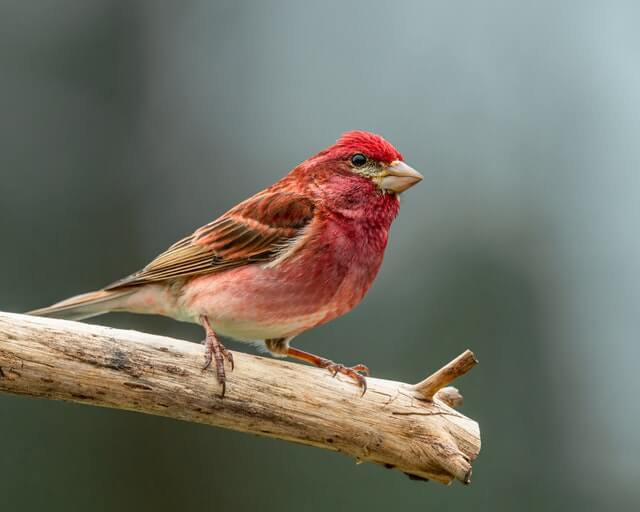
The purple finch is a North American bird that is found in open woodlands and edges, as well as in towns, gardens, and orchards. These birds are about 6 inches long and have a wingspan of about 10 inches. The male purple finch has a reddish-brown body and wings, with a white belly. The female purple finch has no red, and is paler with brown streaks on her head.
Purple finches eat mostly seeds, but they also consume insects, berries, and nectar. They typically feed on the ground, but they will also perch on trees and shrubs. These birds can be attracted to yards by zinnia flowers, and by providing food such as sunflower seeds, thistle seeds, or Nyjer seed in a feeder.
Cassin’s Finch
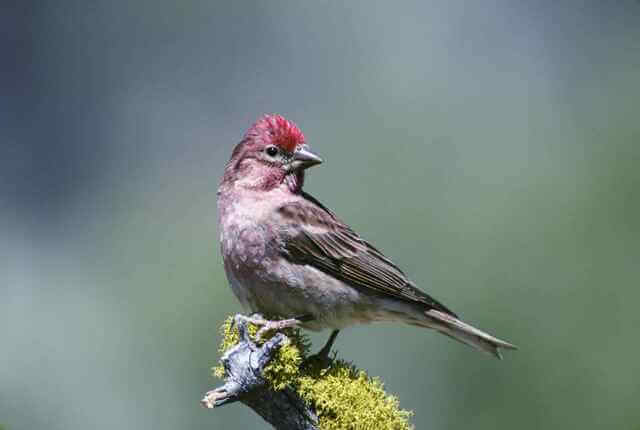
Cassin’s Finch is a small North American songbird. The range of the Cassin’s Finch is from southern Alaska to Baja California, and east to western Texas. These birds live in open areas near water, such as meadows, prairies, and pastures.
The diet of the Cassin’s Finch includes seeds from a variety of plants, including grasses, weeds, and trees. In addition, they also consume small invertebrates, and insects. Zinnia seeds are not a major part of their diet, but they will occasionally enjoy them if they are available.
Pine Siskin

The Pine Siskin is a small North American finch that is found in open woodlands and gardens. These birds are seed-eaters and prefer to eat the seeds of conifers, but they will also eat the seeds of other plants, including zinnias.
The Pine Siskin has a range that extends from Alaska to Central America, and it can be found in a variety of habitats, including forests, grasslands, and wetlands. These birds are usually seen in flocks and can be difficult to spot because they are so small.
Chipping Sparrow
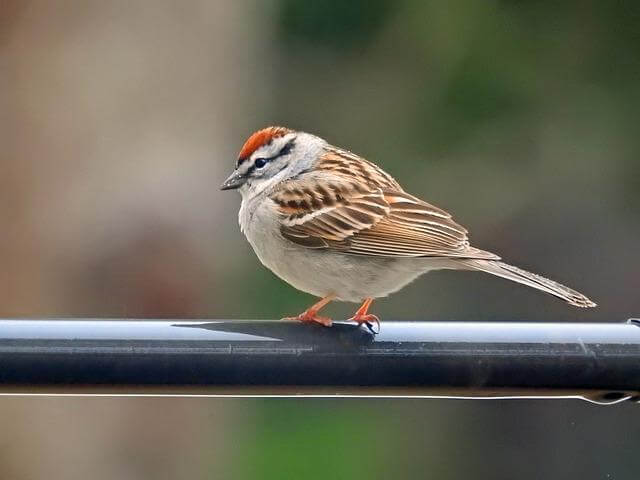
The Chipping Sparrow is a small North American sparrow. It is the most common and widely distributed sparrow in the United States and Canada. The Chipping Sparrow can be found in open woodlands, parks, gardens, and farmland.
The diet of the Chipping Sparrow consists of insects, spiders, seeds, and fruit. They will also eat zinnia seeds from the flowers in your garden.
House Sparrow
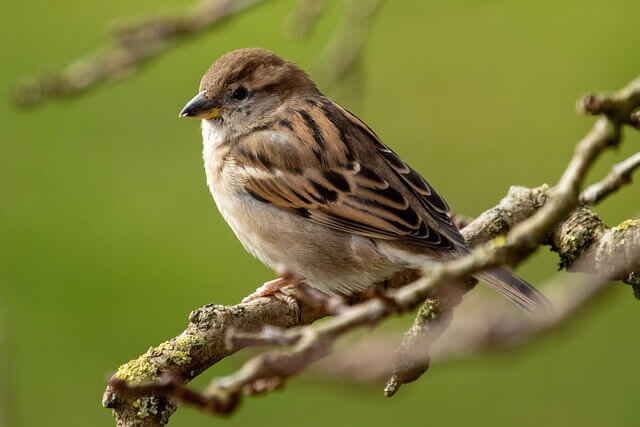
House Sparrows are a common backyard bird, found in most parts of the United States. They prefer to live in proximity to people, and will often build their nests in eaves, gutters, or birdhouses. These birds are omnivores, and will eat a variety of things including insects, seeds, fruits, and berries.
House Sparrows have also been known to eat the seeds from flowers like zinnias. While they may not be the primary pollinators of these plants, they can still play an important role in helping them grow.
Northern Cardinal

The Northern Cardinal is a North American bird that is found in a variety of habitats, including forests, yards, and parks. These birds are omnivorous, meaning that they eat both plants and animals. Cardinals mostly eat insects and seeds, but they will also eat fruit and other plant material.
Cardinals are not particularly fussy when it comes to their diet, and they will eat just about any kind of seed they can find. This includes the seeds from Zinnia flowers.
Spotted Towhee
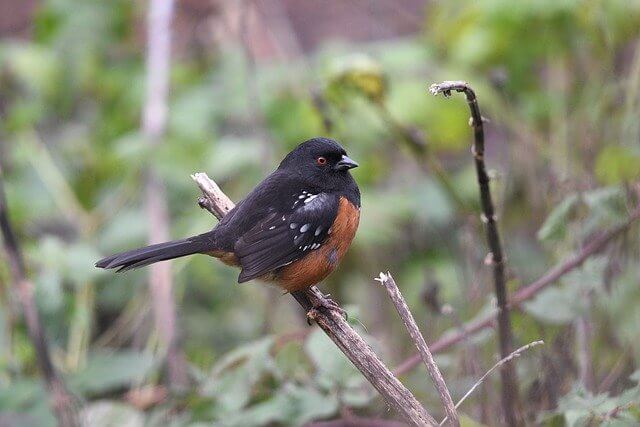
The Spotted Towhee is a passerine bird that ranges from the southwestern United States to Central America. They prefer habitats with dense underbrush and tall grass, like brushy fields, forest edges, and scrublands. These birds are omnivorous and eat a variety of seeds, fruits, insects, and other small animals. In the wild, they may also consume zinnia seeds from the flowers.
Towhees typically forage on the ground, but they can also climb trees to find food. These birds are monogamous and build their nests in low bushes or trees. The female lays 3-5 eggs and both parents help incubate them. Young towhees leave the nest about two weeks after hatching.
Hummingbirds
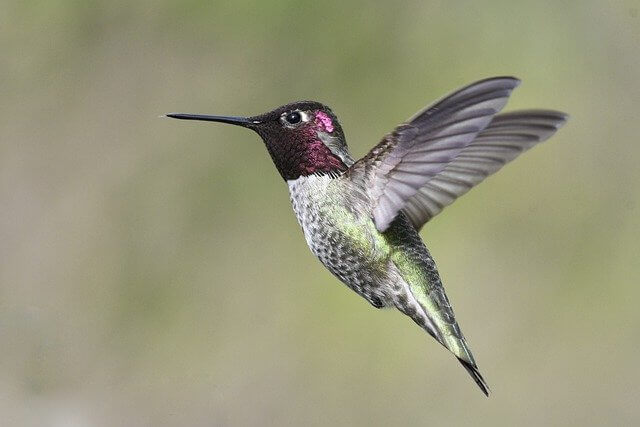
Hummingbirds are found in North and South America, as well as parts of Central America. They inhabit a wide variety of habitats, including forests, deserts and even urban areas. Most hummingbirds feed on nectar from flowers. However, some species also eat insects or spiders.
Hummingbirds are particularly attracted to brightly colored flowers, such as zinnias. They love the sweet nectar in these flowers and will often perch on them while feeding.
The Benefits of Attracting Zinnia-Eating Birds
Attracting zinnia-eating birds to your garden not only adds to the natural beauty but also offers several advantages for both the birds and gardeners. Here’s a closer look at the benefits of welcoming these feathered friends:
Natural Pest Control
Zinnias are often susceptible to pest infestations. Birds that are attracted to zinnias, like Chipping Sparrows and House Sparrows, can be a natural form of pest control. They feed on insects and larvae that might otherwise damage your zinnia plants.
Pollination Assistance
Birds, especially hummingbirds, play a significant role in pollination. As they visit your zinnia blooms for nectar, they inadvertently transfer pollen from flower to flower. This helps zinnias reproduce and ensures a healthy, vibrant garden.
Aesthetic Appeal
Zinnia-eating birds, with their vibrant colors and songs, enhance the visual and auditory appeal of your garden. Their presence can transform your garden into a lively and dynamic space.
Educational Opportunities
Welcoming these birds into your garden provides an educational opportunity for bird enthusiasts and children. Observing their behavior, identifying different species, and understanding their role in the ecosystem can be a fascinating and enriching experience.
Connection to Nature
Creating a bird-friendly garden fosters a deeper connection to nature. The daily interactions with zinnia-loving birds can instill a sense of appreciation for the natural world and its delicate balance.
By attracting zinnia-eating birds, you contribute to a thriving garden ecosystem while reaping the rewards of enhanced pest control, pollination, and the simple joy of birdwatching. Your zinnia-filled garden becomes a haven not just for plants but for the avian wonders of the natural world.

